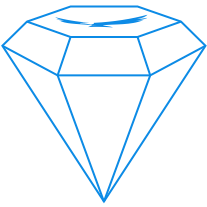Enterprise Design Model – Introduction
With the Enterprise Design Canvas we have captured a conceptual design including both business and IT. Using creative and critical thinking we have formulated solutions. The next step is to holistically approve this design. Within enterprise architecture the common approach is the application of The Open Group Architecture Framework, in short TOGAF®. It is a sound approach to design a holistic perspective. Its core strength is the meta-model which describes in abstract an entire enterprise. The standard out-of-the-book meta-model consists of most entities needed and is focused on the interaction between these entities. It is essential to keep focused on the interaction between entities or self-contained groups of entities.
This blog post introduces an enhanced meta-model called Enterprise Design Model, which correlates with the Enterprise Design Canvas. This correlation will be explained in future blog post(s).

This diagram illustrates our design meta-model applicable for business and organization. We named it Enterprise Design Model – Business, or Business Design Model. It is divided into three architectural type columns (i.e. Structure, Behavior, and Knowledge), which have been inspired by natural language, where a sentence has a subject (structure), a verb (behavior), and an object (knowledge).
We use the following description as a starting point:
- Knowledge: describes the elements with which a behavior is executed. Usually these elements are business-, information- or data objects, but these could also represent physical objects like products or sources.
- Behavior: describes the dynamics of each element. How does it behave or how will its behavior be exposed?
- Structure: describes how all elements of the architecture will fit together to form a coherent whole. The structure concepts are assigned to behavioral concepts, to show who or what performs the behavior. The structure elements are the business actors, solutions and systems that generate the actual behavior, i.e., the ‘subjects’ of activity.
The Business Design Model provides an overview of the business and organization architecture models. In total there are 14 or more models. This might sound like a lot, but considering this represents the holistic perspective of an entire enterprise it is a relatively small number of models. Also, each model illustrates a specific job, and many stakeholders will be interested in only one or two of these models. The intent of a model is to communicate the overall concepts captured in the Enterprise Design Canvas. For this reason, the techniques used to draw these pictures may be different dependent on the environment, but as a starting point the following descriptions should work in most circumstances:
The context models focuses on the strategic intent, insights and decision making.
- Objectives (Business Structure) – Illustrates the business vision and objectives set by the decision makers to be fulfilled by the organization, application solutions and technology systems.
- Measures (Business Behavior) – Captures the measurements derived from the objectives to be related to the business services, business processes, application capabilities and technology components.
- Outcomes (Business Knowledge) – Elaborates the desired business outcomes, which are expected into return of the customer experience with the organization. The business outcomes are the business insights required by decision makers to validate the business objectives.
The business and organization architecture models focuses on the value propositions offered to internal and external customers, which are realized in the organization by business activities processing information.
- Services (Business Behavior) – Illustrates the business services to be provided to the internal and external customers to fulfill the business vision and objectives.
- Activities (Business Behavior) – Elaborates the business activities to be performed to realize the value proposition (delivery of business services and products). It models these business activities as well defined and self-contained processes.
- Organization (Business Structure) – Captures how the proposed business services fit within the target organisation model, and how these services interact (business channels) with one another to create the desired customer experience.
- Information (Business Knowledge) – Shows the information as understood by the business as a set of objects and includes the relationships between these objects. This information model needs to be supportive of the business services described in the Services model (and vice versa).
- Product (Business Knowledge) – Captures a product as understood by the business, a carrier of business knowledge or the result of applied business knowledge. This product model includes the relationships with the performed business processes to realize them and/or business services which are involved in the delivery.
- Capabilities (Business Behavior) – Illustrates the internal capabilities needed by the business to allow it to commence the processes described.
- Solutions (Organizational Structure) – Elaborates how the capabilities interact with one another to fulfill the needs of the organization model and thus provide the desired customer experience.
- Data (Business Knowledge) – Captures the data objects and relationships required to support the Information model. This data model is derived from the Information model, but at the same time, needs to be supportive of the capabilities described in the capability model (and vice versa).
- Components (Business Behavior) – Illustrates the individual components available to the business to perform its daily activities.
- Systems (Organizational Structure) – Elaborates how the business components interact with one another to fulfill the needs of the solution model.
- Sources (Business Assets) – Captures the sources of the raw data described in the data model, but at the same time, needs to be supportive of the components described in the component model (and vice versa). An example is a Human Resource, a person with a certain skillset to support the business component.
When an organization decides to increase efficiency of the business by applying IT we see detailing of the Enterprise Design Model. In future blog posts we will elaborate on detailing of the Enterprise Design Model with IT.
note: TOGAF® is a registrated trademarks of The Open Group
© 2014 ARTe Group BV – All rights reserved


